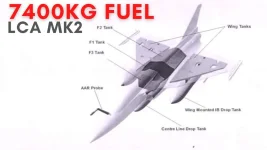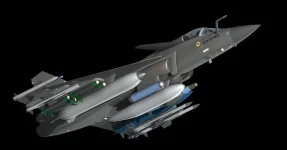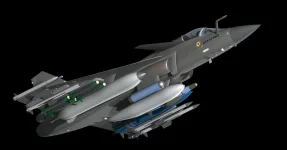- Views: 2K
- Replies: 12
In a major achievement for India's indigenous defence capabilities, the upcoming Tejas Mk2 aircraft is on track to integrate advanced Gallium Nitride (GaN)-based AESA radar technology by 2026, years ahead of its European counterpart, the French Dassault Rafale F5.
This development positions India as a leader in adopting next-generation sensor technology, reinforcing the nation's push for self-reliance under the Atmanirbhar Bharat mission.
The advanced radar, known as the 'Uttam', has been developed by the DRDO's Electronics and Radar Development Establishment (LRDE). The GaN-based version is a significant leap from the current Gallium Arsenide (GaAs) technology used in most modern fighter jets.
GaN radars offer higher power efficiency, better thermal management, and a greater resistance to electronic jamming, which translates to superior detection range and tracking capabilities on the battlefield.
Starting with the 41st unit, the Tejas Mk1A fleet will also be equipped with the indigenous Uttam AESA radar, replacing the currently used Israeli ELM-2052 system.
The version developed for the more advanced Tejas Mk2 will feature 912 Transmit/Receive Modules (TRMs), which are the core components that transmit and receive radio waves.
This is a notable increase over the 838 TRMs found in the Thales RBE2 radar on the Rafale jets currently operated by the Indian Air Force. The higher number of TRMs allows the radar to detect targets from a greater distance and track multiple objects with higher accuracy.
The Tejas Mk2, a 4.5-generation medium-weight fighter, is anticipated to make its first flight with the integrated GaN-based radar in 2026, following a prototype rollout scheduled for late 2025.
The aircraft's larger airframe allows it to house the powerful radar, which is expected to provide a detection range of over 150 kilometres for a typical fighter-sized target.
This advanced sensor will be paired with indigenous long-range missiles like the Astra Mk3, which has a reported range of over 300 kilometres, significantly boosting the aircraft's air combat effectiveness.
In comparison, Dassault Aviation of France has planned a GaN-based radar for its next-generation Rafale F5 variant. However, this upgrade is not expected to be operational until around 2033.
The current Rafale F3R and F4 models use the proven, but technologically older, GaAs-based RBE2-AA radar. While a robust system, its performance against stealthier, next-generation threats is limited compared to the potential of GaN technology.
The French roadmap for the Rafale F5 includes other significant enhancements, such as more powerful engines, integration of hypersonic missiles, and capabilities to operate alongside unmanned combat drones. These upgrades are designed to ensure the Rafale remains a formidable platform for decades to come.
Nonetheless, India's timeline for deploying a homegrown, cutting-edge radar system represents a significant technological lead in this specific and critical area of combat avionics. This success not only enhances the capabilities of the Indian Air Force but also strengthens India's position as a rising power in global defence manufacturing.




